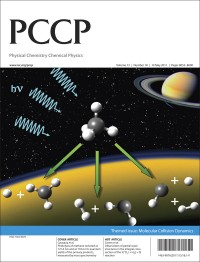 Nominations are now open for the following two Deutsche Bunsen-Gesellschaft für Physikalische Chemie e. V. (DBG) Prizes:
Nominations are now open for the following two Deutsche Bunsen-Gesellschaft für Physikalische Chemie e. V. (DBG) Prizes:
van‘t Hoff Prize
The van‘t Hoff Prize was established in 2008 by Gerhard Ertl in remembrance of the first Nobel Prize winner in chemistry, Jacobus Henricus van‘t Hoff. The award consists of a Silver Medal, a Certificate and an amount of €20.000. It will be presented at the 111th Annual General Meeting of the German Bunsen-Society from 17-19 May 2012 in Leipzig.
The prize will be awarded for outstanding and sustained contributions to the field of Physical Chemistry to an active scientist. Suitable candidates of high international visibility in their research field will be evaluated with respect to scientific quality of their research. There are no restrictions on age, nationality or country of residence, but candidates should preferentially come from a German-speaking region in Europe. Candidates do not need to be members of the DBG.
The merits of a particular candidate should be brought to the attention of the selection panel by means of a nomination sent to the DBG. The nomination should be accompanied by a supporting statement describing fully the outstanding contributions made by the candidate, including biographical details and a list of publications. Self-nominations are not possible.
NERNST-HABER-BODENSTEIN PRIZE 2012 (In memory of Max Bodenstein, Fritz Haber and Walther Nernst)
The prize will be presented at the 111th Annual General Meeting of the German Bunsen-Society from 17-19 May 2012 in Leipzig.
The prize will be awarded to a distinguished younger scientist (of up to 40 years of age) for outstanding scientific achievements in the field of physical chemistry. Suitable candidates of international visibility in their research field will be evaluated by a high level expert selection panel with respect to the scientific quality, originality and independence of their research. Candidates should come from a German-speaking region of Europe or work there at the time of their nomination.
Nominations from established scientists in the area of physical chemistry should include a short CV of the candidate, an overview of the candidate’s scientific achievements and publications, and a supporting statement.
- Nominations for both Prizes should be submitted by 1 October 2011 to:
Deutsche Bunsen-Gesellschaft
für Physikalische Chemie e. V.
Erika Wöhler
Theodor-Heuss-Allee 25
60486 Frankfurt am Main
Germany
View the exciting PCCP themed issue just published on Analysis and Control of Ultrafast Photon-Induced Reactions which will be displayed at the annual meeting of DBG in June 2011.













 Nominations are now open for the following two Deutsche Bunsen-Gesellschaft für Physikalische Chemie e. V. (DBG) Prizes:
Nominations are now open for the following two Deutsche Bunsen-Gesellschaft für Physikalische Chemie e. V. (DBG) Prizes:


